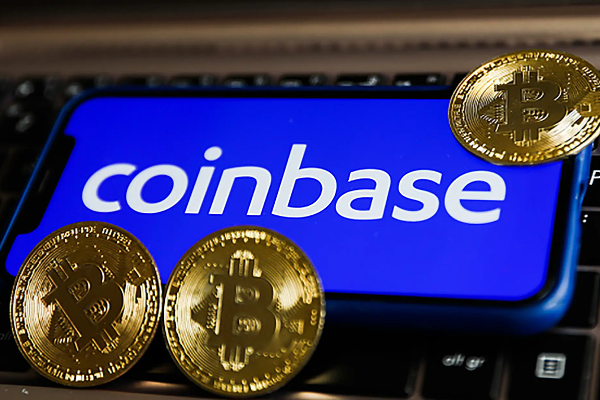Assets are collapsing across the board: The total market value of cryptocurrencies has fallen by 10%. Where is the chance for a turnaround?

Assets collapsed across the board: global markets are in chaos
Global financial markets are in the darkest moment, and a storm caused by US President Donald Trump's new tariff policy has swept across major asset classes. At the opening of Monday, the US stock futures market was bleak, with the S&P 500 stock index futures falling 3.2%, the Nasdaq 100 stock index futures plummeting 5.7%, and the fear index VIX futures soaring 34.4% to 45.8, hitting the highest level since 2022. Risk aversion pushed up the price of 10-year US Treasury bonds, the yen appreciated 1.3% against the US dollar, and spot gold fell to $2,988.61 per ounce.
Last Thursday, the S&P 500 index plunged 4.8% to close at 4,850 points, the largest single-day drop in 2024. On Friday, the selling wave swept further, and the Dow Jones Industrial Average fell 2,231 points, or 5.5%, to close at 38,900 points, erasing nearly two months of gains. The Nasdaq Composite Index, which is dominated by technology stocks, fell 11.8% in two days and officially fell into the bear market. Technology giants performed poorly: Apple fell to $205, a drop of 5.5%; Tesla fell 10.3% during the session and closed at $310; Nvidia's market value evaporated by more than $300 billion in a single day, a drop of 9.1%. Global stock markets were under pressure simultaneously. Japan's Nikkei 225 index opened down 5.6% on Monday, and trading was suspended for 15 minutes during the session due to hitting the 7% limit mechanism; South Korea's KOSPI index fell 4.9% to a six-month low; Europe's STOXX 600 index opened down 3.8%.
The commodity market was also not spared. Gold fell below the psychological mark of $3,000 per ounce, hitting a low of $2,988.61, a drop of 1.9%, while silver fell 2.3% to $34.50 per ounce. The energy market was hit hard, with WTI crude oil futures falling to $59.80 per barrel, down 12% from last week's high, hitting a new low since April 2021; Brent crude oil fell to $63.20 per barrel. Industrial metal prices fell, with New York copper futures falling 8.2% to $3.85 per pound, reflecting the market's pessimistic expectations for global manufacturing. Foreign exchange market volatility intensified, with the Australian dollar falling 1.1% to $0.6350 against the US dollar, the euro falling 0.9% to 1.0450 against the US dollar, and the US dollar index rising to 104.50, a three-month high.
The cryptocurrency market has failed to escape the fate of risky assets. According to CoinMarketCap data, the total market value of global cryptocurrencies has shrunk from $2.4 trillion to $2.16 trillion, a drop of 10%. Bitcoin fell 6%, hitting a low of $77,100; Ethereum fell 12.4% to $1,540; the performance of the crypto market is highly synchronized with Nasdaq, highlighting its characteristics as a "high beta asset". The total amount of liquidation in the past 24 hours across the network is $886 million.
Concerns in the bond market are also intensifying. The MOVE Index (Merrill Lynch Option Volatility Estimate Index), an indicator of the implied volatility of U.S. Treasuries, soared from 108.50 at the end of March to 125.71, an increase of 15.8%. Arthur Hayes, founder of BitMEX, pointed out: "If you want to predict when the Fed will give in and ease aggressively, the MOVE index is a key indicator. The higher the index, the higher the margin requirements for Treasury and corporate bond financing transactions, and the selling pressure will sweep the market. This is an area that the Fed is determined to defend. If it breaks through 140, easing policies will be inevitable." The current level is only one step away from the critical point, indicating that greater turmoil is coming.
Trump's trump card and the confrontation with the market
Faced with the market crash, the Trump administration showed unusual calmness. Treasury Secretary Steven Bessant said on Sunday: "Market volatility is temporary, and economic fundamentals have not collapsed." Commerce Secretary Robert Lutnick made a strong statement: "Tariffs are necessary protection measures for the US economy and will not be backed down." Trump posted on the social platform "Real Social": "Don't be afraid, this is just a small episode on the road to prosperity." Hayes analyzed: "Many of Trump's core voters do not hold stocks or financial assets. For them, the market decline even brings a psychological satisfaction to the "Wall Street elite." This gives Trump the confidence to push tariffs because he knows that votes will not be lost."
The market is unmoved. U.S. federal funds futures show that investors are betting that the Federal Reserve will cut interest rates by 120 basis points this year, implying expectations of five 25 basis point rate cuts. JPMorgan Chase predicts that the Federal Reserve may cut interest rates continuously from May, reducing the federal funds rate to 2.75%-3.0% by January 2026. Goldman Sachs warned that if tariffs are fully implemented, the US GDP growth rate in 2025 may be revised down to 1.2%, but the inflation rate may rise to 3.8%, putting the Fed in a dilemma. An anonymous Wall Street hedge fund manager said: "Investors no longer believe the government's optimistic promises, but only look at the data and the Fed's next step." Trump's statement further exacerbated uncertainty. He shared a video on "real social" and hinted that he intended to let the stock market fall by 20% to boost demand for Treasury bonds, depress the dollar and lower mortgage rates. White House economic adviser Kevin Hassett urgently clarified: "This is just the president's personal idea, not a policy goal." But market trust has been severely damaged, and the VIX index rose further to 47.2 before the market opened on Monday. Mirror of history: Bitcoin is difficult to be independent, and opportunities are sought in the crisis. The current situation is reminiscent of crisis moments in history. On "Black Monday" in 1987, the Dow Jones Index plummeted 22.6% on Monday after the weekend panic fermented, setting a record for the largest single-day drop. The circuit breaker crisis caused by the COVID-19 pandemic in March 2020 was even more immediate, with the S&P 500 triggering circuit breakers four times in 10 days:
During this crisis, the S&P 500 fell from 3,393 points at the end of February to 2,237 points on March 23, a drop of more than 34%. Bitcoin performed particularly badly, plummeting 39.5% on March 12, a rare single-day drop in the crypto market. It is worth noting that Bitcoin failed to break out of its independent market, but was highly linked to the Nasdaq, and the decline even amplified the performance of technology stocks. CNBC commentator Jim Cramer pointed out: "The lesson of 2020 is that Bitcoin is no longer a safe-haven asset, but a "big Nasdaq", with risk exposure far exceeding that of traditional stocks." Today, the same pattern is repeating itself: the correlation coefficient between Bitcoin and the Nasdaq 100 has recently risen to 0.85, far higher than gold's 0.12, indicating its vulnerability in a panic environment.
History also reveals a turning point. After each circuit breaker in 2020, short-term market panic intensified, but the Fed quickly cut interest rates to zero and launched unlimited QE, eventually stabilizing the situation. Although the turmoil caused by Trump's tariffs was policy-driven, the pattern of panic outbreak on Monday was exactly the same. Cramer added: "What 1987 and 2020 have in common is that the fear brewing over the weekend got out of control on Monday. Today, the opacity of the trade war leaves investors nowhere to escape."
Global shocks and the counterattack of safe-haven assets
The ripples of this storm have spread across the world. China's Ministry of Commerce said on Sunday: "We will take resolute measures to counter." The EU Trade Commissioner warned that tariffs on US cars and agricultural products may be imposed. India and Brazil are also evaluating retaliatory measures. The 7.2-magnitude earthquake in Myanmar last week further disrupted the rare earth and semiconductor supply chains, pushing up high-tech manufacturing costs. Morgan Stanley estimates that if the supply chain crisis continues, global economic growth may be revised down by 0.5 percentage points in 2025.
Safe-haven assets have become a few bright spots. The 10-year Treasury yield fell 10 basis points to 3.89%, and the 2-year yield fell 19 basis points to 3.46%. Bloomberg data shows that the scale of global negative-yield bonds has risen to $16.5 trillion, a 2023 high. The yen rose to 148.50 against the dollar, and the Swiss franc rose 0.8%. Although gold has a short-term correction, it is still attractive in the long run. UBS predicts that it may return to $3,100 per ounce by the end of the year.
The Fed's critical point: the alarm bell of the MOVE index
The Fed is facing unprecedented pressure. Tariffs may push up import costs, and inflation concerns have emerged-Goldman Sachs estimates that if the 34% tariff is implemented, the US CPI may rise by 1.2 percentage points within 12 months. But the market crash and bond volatility force easing. Hayes' MOVE index theory has become the focus: "When the MOVE index climbs, the financing cost of Treasury transactions surges, and the selling pressure will be transmitted to the financial system. The Fed has no choice but to take action. 140 is the critical point." The current index has reached 125.71, and if panic intensifies on Monday, it may break through quickly.
Opinions within the Fed are divided. Hawkish officials advocate waiting for inflation data, while doves warn that delays may cause systemic risks. Chicago Fed President Evans said: "When the market is disordered, monetary policy must be decisive." The market expects that the May FOMC meeting may start to cut interest rates, or by 50 basis points.
Where is the turning point: the dawn after the huge shock
Hedge fund manager Bill Ackman proposed another possibility: "If Trump announces a postponement of tariffs on Monday to gain room for negotiations, the market may be able to breathe." But he also warned that if the policy is tough to the end, the S&P 500 may fall another 10%, and the risk of recession will rise from the current 35% to 60%. Ackman concluded: "In any case, this Monday will determine the direction of the next few months."
Although this huge shock is chilling, it may breed a turnaround. After the circuit breaker in 2020, the Federal Reserve's decisive intervention reversed the downward trend; now, the alarm bells of the MOVE index are ringing, and the pressure to cut interest rates is increasing. If the Fed gives in, loose policies may inject vitality into the market and rekindle investor confidence. History tells us that the deepest darkness is often accompanied by dawn. Trump's tough stance and the fragility of the market form a tug-of-war, and the Fed's choice becomes the decisive variable.
The call for rate cuts is getting louder and louder-this may be the first ray of sunshine after the storm. For investors, the pullback of gold is a window for bargain hunting, and the collapse of technology stocks is a touchstone for patience. As Ackman said, this Monday will go down in history, and the Fed's actions may bring an unexpected end to this crisis.









